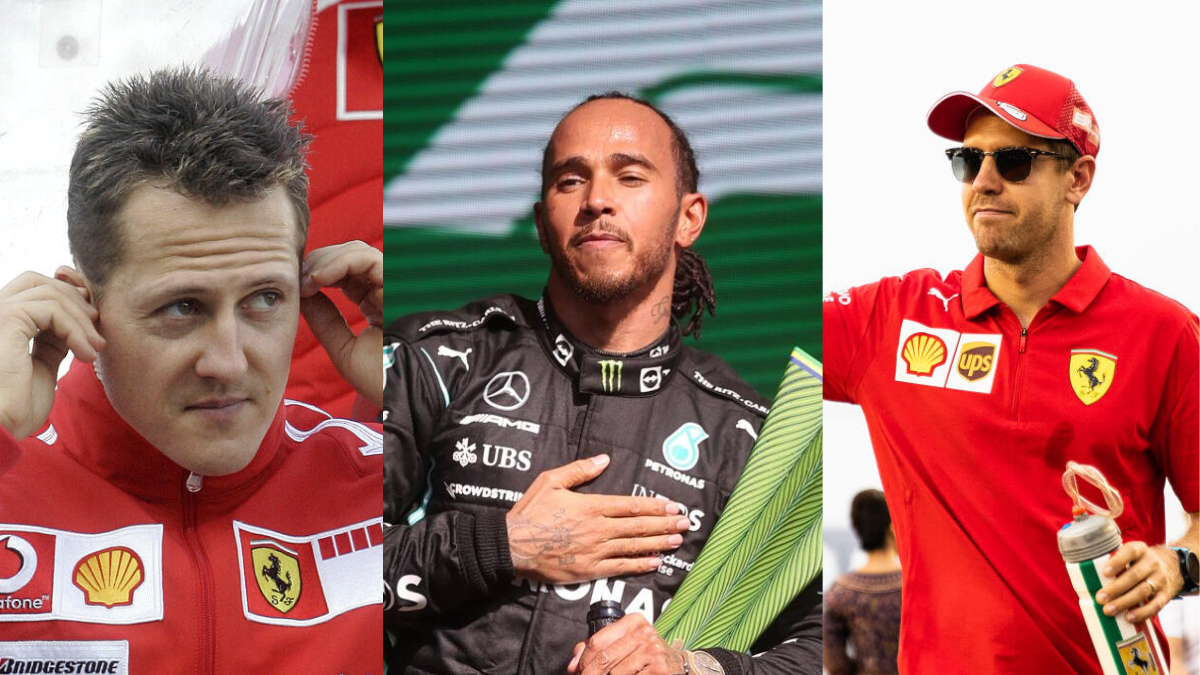From Hamilton to Schumacher: The biggest driver moves in Formula One history
Seven-time world champion Lewis Hamilton sent shockwaves through the Formula One world with his decision of leaving Mercedes and joining Ferrari from 2025.
The British driver has won six of his seven titles with Mercedes. While the team has struggled ever since the new regulations were introduced in 2022, many expected Hamilton to finish his career at Mercedes itself.
However, the 39-year-old’s switch to the Italy-based Ferrari is not the only high-profile driver move in the history of Formula One.
Lewis Hamilton – McLaren to Mercedes (2013)
Hamilton’s decision to move from Mercedes to Ferrari in 2025 is not the first time the British driver has surprised the motorsport community around the globe. In 2013, the then 28-year-old Hamilton left McLaren, a team which helped him rise from a young karter to eventually a world champion in 2008. He joined Mercedes, an outfit which had returned to Formula One as a full works team in 2010, after more than 50 years.
Hamilton replaced seven-time world champion Michael Schumacher, who retired from the sport for the second and final time, and joined his childhood karting teammate Nico Rosberg. It was a bold but calculative move from Hamilton as Mercedes was ahead of the rest of the pack in terms of development when it came to the new regulations in 2014 which mandated the use of turbo-hybrid engines.
Since then, Hamilton has won world championship titles in 2014, 2015, 2017, 2018, 2019 and 2020 while McLaren has won none since 2008.
ALSO READ | Who might replace Lewis Hamilton at Mercedes?
Michael Schumacher – Benetton to Ferrari (1996)
Amidst allegations of cheating and other controversies, Michael Schumacher won world championships in 1994 and 1995 with Benetton. However, the German driver had had enough and decided to move to Ferrari before the 1996 season. The Italian team had last won a driver’s championship in 1979 and thus, Schumacher’s call to join a struggling side raised many questions.
After finishing third in his debut season for Ferrari, Schumacher was joined by former Benetton employees Rory Byrne (designer) and Ross Brown (technical director). The trio, along with Team Principal Jean Todt, overcame the initial challenges posed by Williams’ Jacques Villeneuve and McLaren’s Mika Hakkinen to eventually dominate the sport and won five straight world championships from 2000 to 2004.
Alain Prost – McLaren to Ferrari (1990)
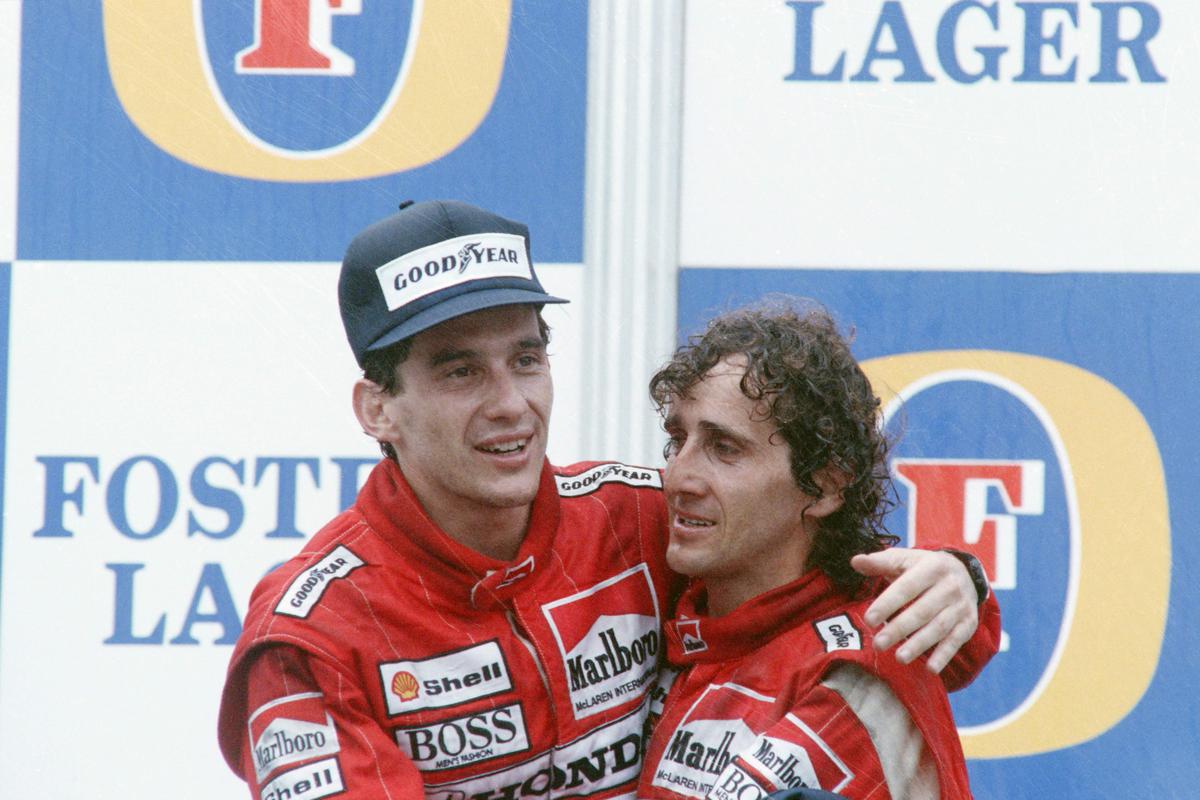
FILE PHOTO: Ayrton Senna (L) of Brazil embraces his team mate and winner of Australian Grand Prix Alain Prost of France.
| Photo Credit:
AFP
FILE PHOTO: Ayrton Senna (L) of Brazil embraces his team mate and winner of Australian Grand Prix Alain Prost of France.
| Photo Credit:
AFP
Alain Prost had won three world championships with McLaren, with the most recent one coming in the 1989 season. However, the French driver switched to Ferrari for the next season, making him the first driver to be signed by the Italian outfit since the death of founder Enzo Ferrari in 1988.
The reason for Prost’s move – the rivalry with teammate Ayrton Senna.
Senna had joined Prost at McLaren in 1988 and the less experienced Brazilian managed to edge Prost in a fierce battle for the championship. The duel only got more intense in 1989 and this time, Prost clinched the title after a controversial clash at Suzuka.
For the 1990 season, the two drivers were in rival teams and another close title race was unfolding. A year after that infamous collision, Prost and Senna again crashed into each other at Suzuka in what was the penultimate race of the season. The result made the Brazilian the world champion.
In his second and final season for Ferrari, Prost had to settle for a fifth-place finish in the championship.
Fernando Alonso – Renault to McLaren (2007)
In a move that shocked the F1 world, 26-year-old Fernando Alonso left Renault in 2007, the team that nurtured his talent and delivered him two consecutive world championships, for a fresh start at McLaren. The Spaniard, hungry for new challenges, felt Ferrari’s dominance was waning and saw McLaren, with its young Lewis Hamilton alongside, as a team on the rise.
While Alonso experienced initial success, podium finishes and even a race win, internal politics and reliability issues hampered his title ambitions. The dream move ultimately turned bittersweet, leaving Alonso without a championship and yearning for a return to his French team.
Kimi Raikkonen – McLaren to Ferrari (2007)
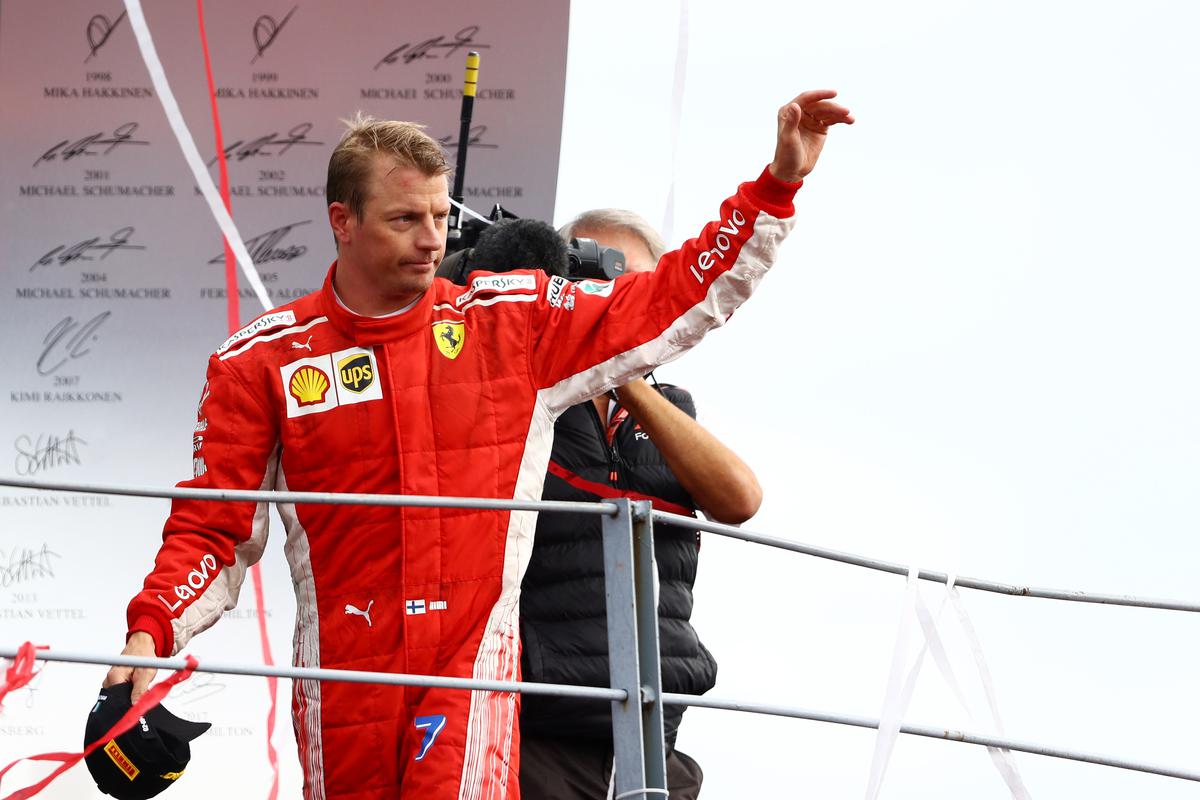
FILE PHOTO: Kimi Raikkonen of Finland and Ferrari celebrates on the podium.
| Photo Credit:
Getty Images
FILE PHOTO: Kimi Raikkonen of Finland and Ferrari celebrates on the podium.
| Photo Credit:
Getty Images
Kimi Raikkonen’s move from McLaren to Ferrari in 2007 was a gamble for both parties. After a near-miss championship in 2005, the Finn’s McLaren stint had been underwhelming. Ferrari, meanwhile, sought a fresh start after years of Michael Schumacher’s dominance. The pairing was unorthodox, Raikkonen’s blunt demeanour a stark contrast to the Scuderia’s traditional polish.
But the gamble paid off spectacularly. Raikkonen, unburdened by team politics, thrived in the red overalls. His raw talent and ice-cool composure clicked with the Ferrari’s aggressive machinery. Against all odds, he snatched the 2007 championship in the final race, marking Ferrari’s last driver’s title to date.
Sebastian Vettel – Red Bull to Ferrari (2015)
Sebastian Vettel’s 2015 switch from Red Bull to Ferrari was a blockbuster move, laden with historical significance. Following in the footsteps of his childhood hero Michael Schumacher, the German four-time world champion aimed to replicate the legend’s success with the Prancing Horse. This move was also in part due to a power-less Renault engine in RB10 being blitzed by the Mercedes and Lewis Hamilton.
After his move, he said, “Everyone is a Ferrari fan. Even if they say they’re not, they are Ferrari fans.”
However, the path to glory wasn’t paved with red. The pressure of matching Schumacher’s legacy, coupled with Ferrari’s strategic inconsistencies, proved daunting. Though Vettel secured victories for the Scuderia, the elusive championship remained out of reach.
Nelson Piquet – Brabham to Williams (1986)
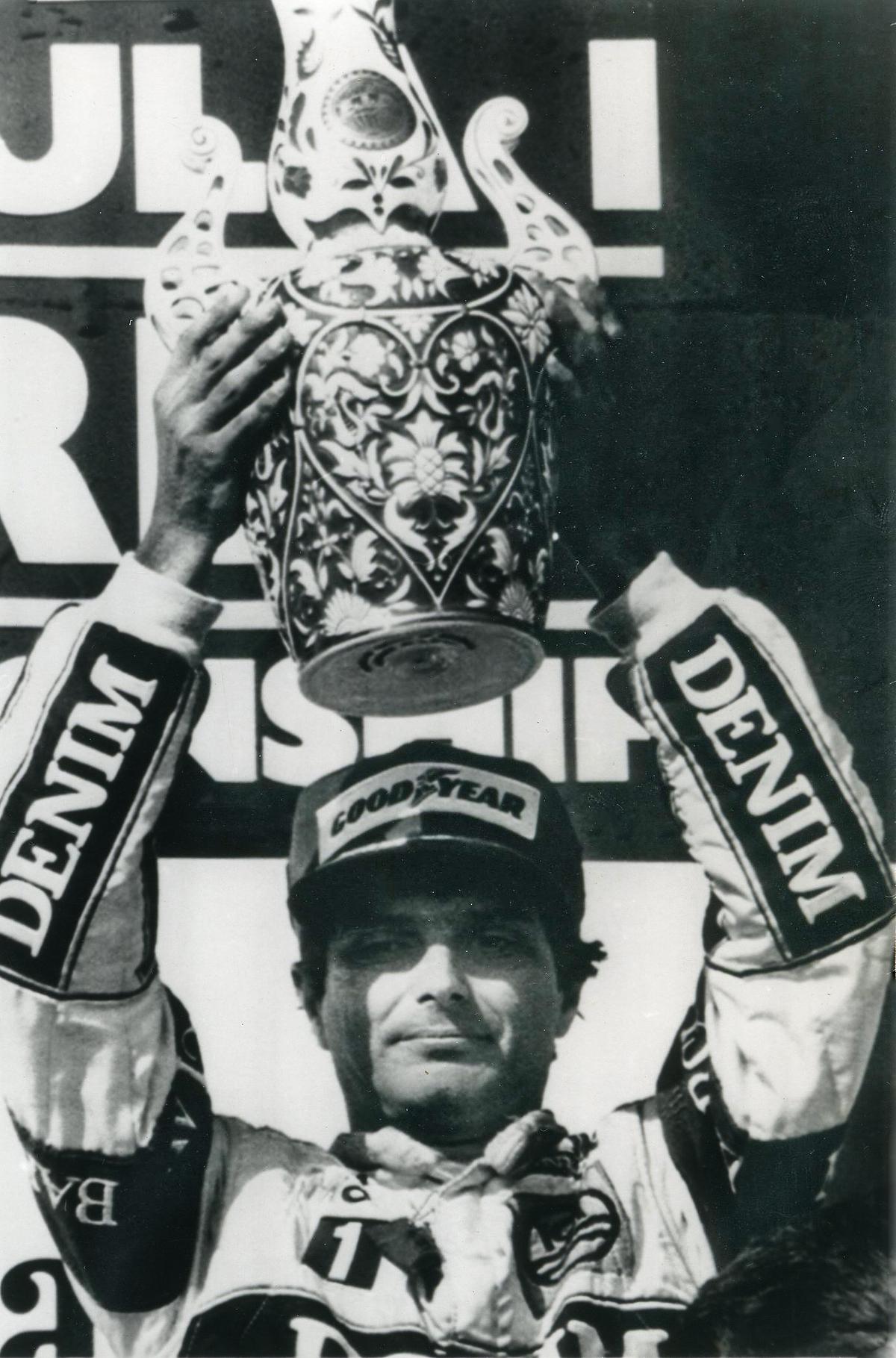
File Photo: Nelson Piquet from Brazil holds up the trophy \after he won the Formula One Grand Prix of Hungary on August 09, 1987.
| Photo Credit:
THE HINDU ARCHIVES
File Photo: Nelson Piquet from Brazil holds up the trophy \after he won the Formula One Grand Prix of Hungary on August 09, 1987.
| Photo Credit:
THE HINDU ARCHIVES
Nelson Piquet’s controversial 1986 move from Brabham to Williams marked a turning point in his career. The fiery Brazilian, already a World Champion with Brabham, sought a more competitive car to challenge Alain Prost’s McLaren dominance. However, his exit from Brabham, fueled by team politics and financial disagreements, left a sour taste.
At Williams, Piquet found the perfect match. The team’s innovative FW11B, powered by the potent Honda engine, was a championship contender. His audacious driving style and strategic cunning complemented the car’s raw speed. The 1987 season was a masterclass, with Piquet claiming his third World Championship title, silencing his critics and solidifying his legacy as one of F1’s most formidable talents.
Juan Manuel Fangio – Won five titles with four different teams
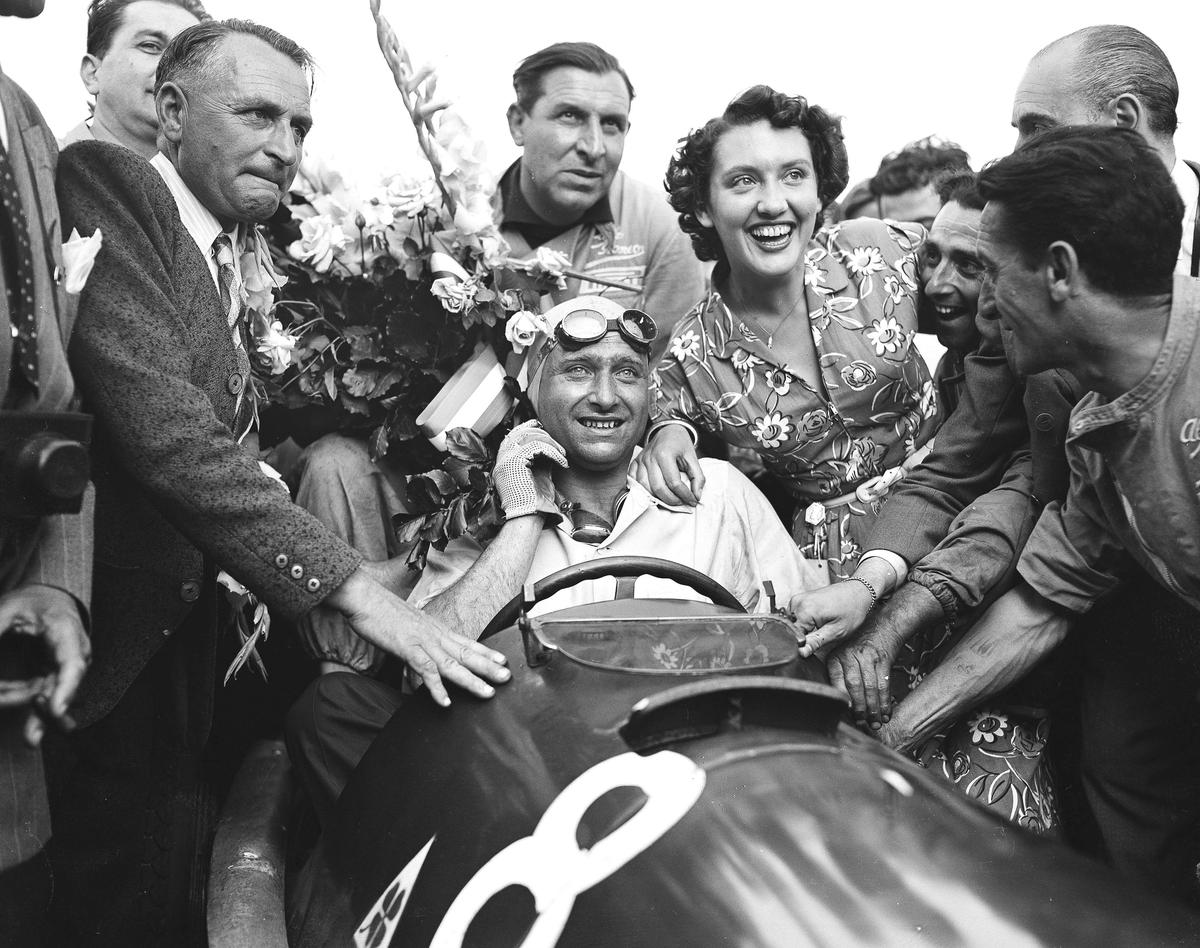
FILE PHOTO: Juan Manuel Fangio, of Argentina, is surrounded by a crowd after winning the Grand Prix of Europe at Rheims, France on July 2, 1957.
| Photo Credit:
AP
FILE PHOTO: Juan Manuel Fangio, of Argentina, is surrounded by a crowd after winning the Grand Prix of Europe at Rheims, France on July 2, 1957.
| Photo Credit:
AP
Fangio was ‘The Master’ of adaptability in the 1950s, the first decade of Formula One, as he clinched five titles with four different teams in a span of six years – Alfa Romeo (1951), Maserati (1954 and 1957), Mercedes-Benz (1954 and 1955), and Ferrari (1956).
The Argentine driver’s racing career began relatively later than usual but still, by the age of 46, he had won five world championships.


